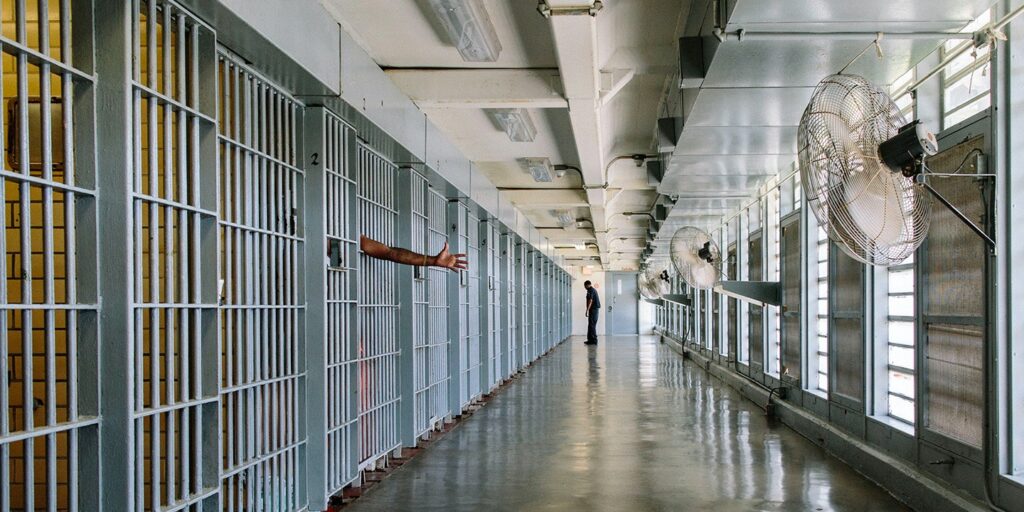Introduction Prisons in the US
If you’ve ever watched a movie about Prisons in the US life, you know that there are many different types of prisons in the United States. However, it can be hard to understand how these different types of prisons differ from one another. The following guide will help you understand what each type of prison looks like and how it operates so that you can better understand the US prison system as a whole.
State Prisons in the US
State Prisons in the US are run by the state, which means you’ll be incarcerated in a building that’s managed and funded by your home state. While there is no national standard for what constitutes a “state prison,”.
it generally refers to any institution where convicts are held after being convicted of committing a crime and sentenced to at least one year in custody. Inmates working toward release can earn money while they’re in prison—and they may even be able to receive college credit or trade skills certification while incarcerated.
State prisons tend to offer more opportunities for inmates than federal penitentiaries do: They tend to have more educational programs (both formal classes and vocational training), mental health services, religious services, recreational activities.
like sports leagues or music lessons and other resources designed to help people prepare for life after release from prison. Plus, since these facilities aren’t federally owned or operated.
states have more flexibility when it comes time for parole determinations than federal prisons do this means. that inmates who might otherwise not qualify for early release could potentially get out sooner if their case was heard at the state level instead of by the BOP (Bureau of Prisons).
Federal prisons
Federal prisons are operated by the Federal Bureau of Prisons and house people who have been convicted of federal crimes. These are serious offenses, such as murder or violent robbery, that fall under federal jurisdiction.
Federal prisoners are usually serving longer sentences than those in state prisons. The locations of these facilities vary widely: some may be located on a military base, while others may be on land owned by the Bureau of Land Management.
Federal prisons are often categorized into five security levels (minimum through maximum), which determine what kind of access inmates have to privileges such as visitation, recreation time and phone calls with family members after they’ve been admitted into the facility.
Your level depends on factors like your criminal history and disciplinary record while incarcerated. if you’re not sure where you belong after doing some research online or talking about it with an inmate advocate at a law firm like ours here at Garcia & DeFazio Law Group PLLC®, we’d be happy to help.
Private prisons
Private prisons are run by for-profit companies and have been around since the early 1980s. They are usually more expensive than state-run prisons, not only because they have to pay back. the investors who brought them into existence but also because they must fulfill requirements for occupancy (and thus profit) set by the government.
In terms of safety and rehabilitation, private prisons also tend to perform worse than their public counterparts. A study from 2015 found that public facilities had significantly lower rates of violence, sexual assault, and staff misconduct than private ones.
Private prisons had a higher rate of violence—including assault with weapons—between inmates than public ones did; this could be partially explained by the fact that prisoners in these facilities tend to be younger and less educated than those in state-run facilities.
The same study found that recidivism rates were higher among inmates who had been incarcerated in private rather than in government-run prison systems. released prisoners spent an average of 223 days longer behind bars if they’d served time at a privately run facility before being released again as opposed to coming out directly onto probation or parole. after serving out their sentence at a publicly run prison or jail system.
Knowing about the different types of prisons in the US can help you understand the prison system.
Knowing about the different types of prisons in the US can help you understand how the prison system works. State prisons are run by state governments. Federal prisons are run by federal government agencies such as the Department of Justice and Bureau of Prisons (BOP). Private companies also operate some facilities, sometimes on behalf of state and local governments, sometimes directly under contract with BOP.
Also read : Life Inside a White Collar Prison
Conclusion
The US has a complicated prison system, but it’s important to know what you’re getting into if you’re considering going to jail. The different types of prisons in the US are a great starting point for understanding what happens behind bars.
